Host: Fraser Cain (@fcain)
Special Guest: Kimberly Cartier ( KimberlyCartier.org / @AstroKimCartier ) Continue reading “Weekly Space Hangout – January 27, 2017: Kimberly Cartier & Exoplanet WASP 103b”

Space and astronomy news
Host: Fraser Cain (@fcain)
Special Guest: Kimberly Cartier ( KimberlyCartier.org / @AstroKimCartier ) Continue reading “Weekly Space Hangout – January 27, 2017: Kimberly Cartier & Exoplanet WASP 103b”
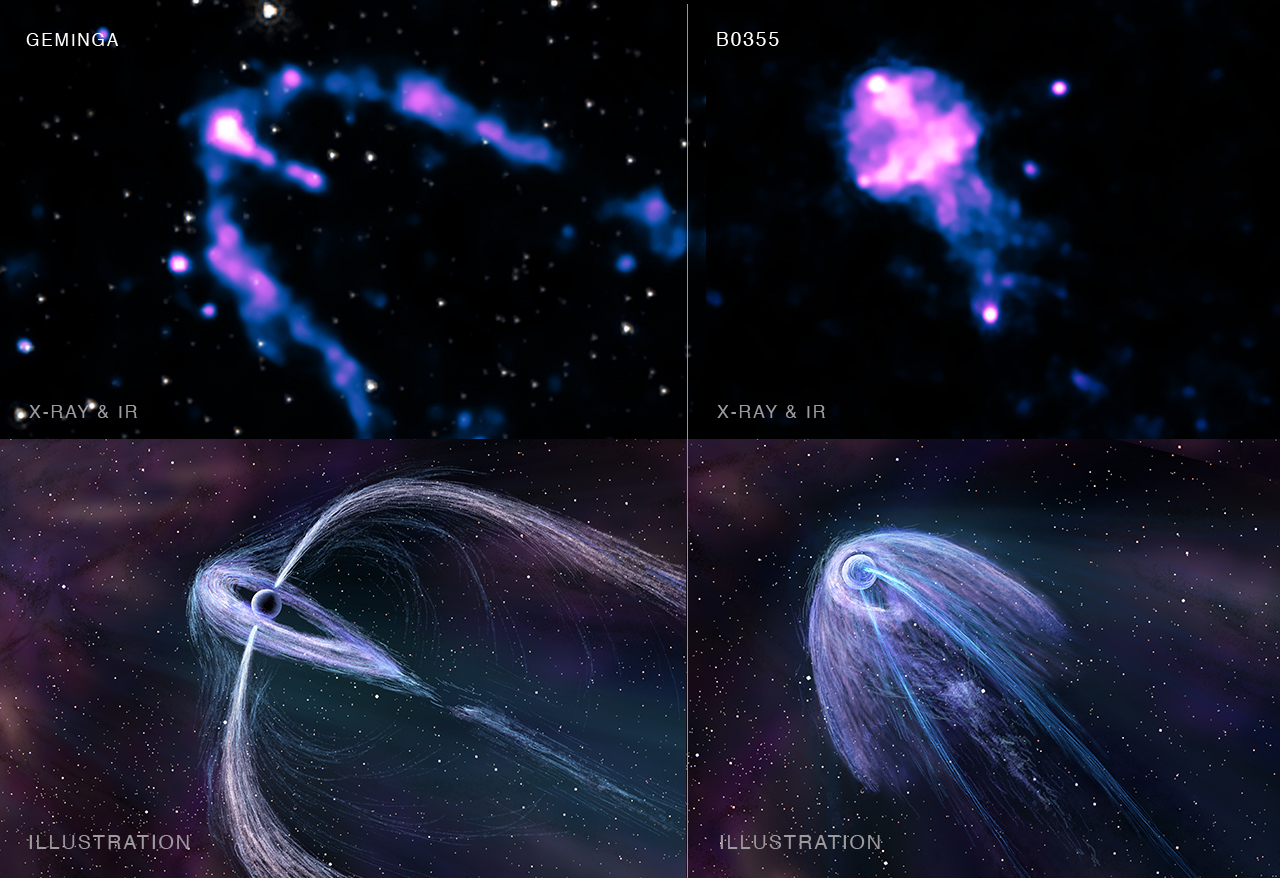
Since they were first discovered in the late 1960s, pulsars have continued to fascinate astronomers. Even though thousands of these pulsing, spinning stars have been observed in the past five decades, there is much about them that continues to elude us. For instance, while some emit both radio and gamma ray pulses, others are restricted to either radio or gamma ray radiation.
However, thanks to a pair of studies from two international teams of astronomers, we may be getting closer to understanding why this is. Relying on data collected by the Chandra X-ray Observatory of two pulsars (Geminga and B0355+54), the teams was able to show how their emissions and the underlying structure of their nebulae (which resemble jellyfish) could be related.
These studies, “Deep Chandra Observations of the Pulsar Wind Nebula Created by PSR B0355+54” and “Geminga’s Puzzling Pulsar Wind Nebula” were published in The Astrophysical Journal. For both, the teams relied on x-ray data from the Chandra Observatory to examine the Geminga and B0355+54 pulsars and their associated pulsar wind nebulae (PWN).
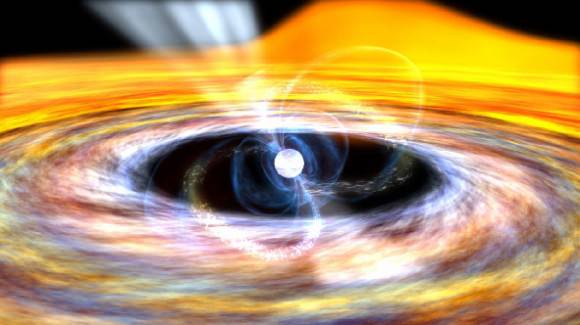
Located 800 and 3400 light years from Earth (respectively), the Geminga and B0355+54 pulsars are quite similar. In addition to having similar rotational periods (5 times per second), they are also about the same age (~500 million years). However, Geminga emits only gamma-ray pulses while B0355+54 is one of the brightest known radio pulsars, but emits no observable gamma rays.
What’s more, their PWNs are structured quite differently. Based on composite images created using Chandra X-ray data and Spitzer infrared data, one resembles a jellyfish whose tendrils are relaxed while the other looks like a jellyfish that is closed and flexed. As Bettina Posselt – a senior research associate in the Department of Astronomy and Astrophysics at Penn State, and the lead author on the Geminga study – told Universe Today via email:
“The Chandra data resulted in two very different X-ray images of the pulsar wind nebulae around the pulsars Geminga and PSR B0355+54. While Geminga has a distinct three-tail structure, the image of PSR B0355+54 shows one broad tail with several substructures.”
In all likelihood, Geminga’s and B0355+54 tails are narrow jets emanating from the pulsar’s spin poles. These jets lie perpendicular to the donut-shaped disk (aka. a torus) that surrounds the pulsars equatorial regions. As Noel Klingler, a graduate student at the George Washington University and the author of the B0355+54 paper, told Universe Today via email:
“The interstellar medium (ISM) isn’t a perfect vacuum, so as both of these pulsars plow through space at hundreds of kilometers per second, the trace amount of gas in the ISM exerts pressure, thus pushing back/bending the pulsar wind nebulae behind the pulsars, as is shown in the images obtained by the Chandra X-ray Observatory.”
Their apparent structures appear to be due to their disposition relative to Earth. In Geminga’s case, the view of the torus is edge-on while the jets point out to the sides. In B0355+54’s case, the torus is seen face-on while the jets points both towards and away from Earth. From our vantage point, these jets look like they are on top of each other, which is what makes it look like it has a double tail. As Posselt describes it:
“Both structures can be explained with the same general model of pulsar wind nebulae. The reasons for the different images are (a) our viewing perspective, and (b) how fast and where to the pulsar is moving. In general, the observable structures of such pulsar wind nebulae can be described with an equatorial torus and polar jets. Torus and Jets can be affected (e.g., bent jets) by the “head wind” from the interstellar medium the pulsar is moving in. Depending on our viewing angle of the torus, jets and the movement of the pulsar, different pictures are detected by the Chandra X-ray observatory. Geminga is seen “from the side” (or edge-on with respect to the torus) with the jets roughly located in the plane of the sky while for B0355+54 we look almost directly to one of the poles.”
This orientation could also help explain why the two pulsars appear to emit different types of electromagnetic radiation. Basically, the magnetic poles – which are close to their spin poles – are where a pulsar’s radio emissions are believed to come from. Meanwhile, gamma rays are believed to be emitted along a pulsar’s spin equator, where the torus is located.
“The images reveal that we see Geminga from edge-on (i.e., looking at its equator) because we see X-rays from particles launched into the two jets (which are initially aligned with the radio beams), which are pointed into the sky, and not at Earth,” said Klingler. “This explains why we only see Gamma-ray pulses from Geminga. The images also indicate that we are looking at B0355+54 from a top-down perspective (i.e., above one of the poles, looking into the jets). So as the pulsar rotates, the center of the radio beam sweeps across Earth, and we detect the pulses; but the gamma-rays are launched straight out from the pulsar’s equator, so we don’t see them from B0355.”
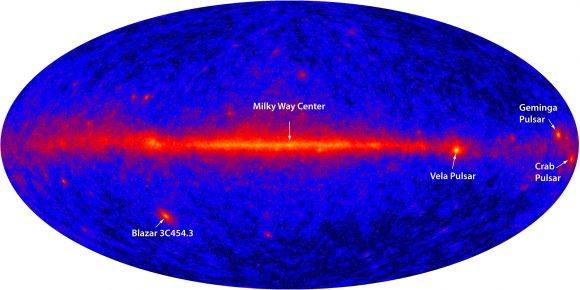
“The geometrical constraints on each pulsar (where are the poles and the equator) from the pulsar wind nebulae help to explain findings regarding the radio and gamma-ray pulses of these two neutron stars,” said Posselt. “For example, Geminga appears radio-quiet (no strong radio pulses) because we don’t have a direct view to the poles and pulsed radio emission is thought to be generated in a region close to the poles. But Geminga shows strong gamma-ray pulsations, because these are not produced at the poles, but closer to the equatorial region.”
These observations were part of a larger campaign to study six pulsars that have been seen to emit gamma-rays. This campaign is being led by Roger Romani of Stanford University, with the collaboration of astronomers and researchers from GWU (Oleg Kargaltsev), Penn State University (George Pavlov), and Harvard University (Patrick Slane).
Not only are these studies shedding new light on the properties of pulsar wind nebulae, they also provide observational evidence to help astronomers create better theoretical models of pulsars. In addition, studies like these – which examine the geometry of pulsar magnetospheres – could allow astronomers to better estimate the total number of exploded stars in our galaxy.
By knowing the range of angles at which pulsars are detectable, they should be able to better estimate the amount that are not visible from Earth. Yet another way in which astronomers are working to find the celestial objects that could be lurking in humanity’s blind spots!
Further Reading: Chandra X-Ray Observatory

Water. It’s always about the water when it comes to sizing up a planet’s potential to support life. Mars may possess some liquid water in the form of occasional salty flows down crater walls, but most appears to be locked up in polar ice or hidden deep underground. Set a cup of the stuff out on a sunny Martian day today and depending on conditions, it could quickly freeze or simply bubble away to vapor in the planet’s ultra-thin atmosphere.

Evidence of abundant liquid water in former flooded plains and sinuous river beds can be found nearly everywhere on Mars. NASA’s Curiosity rover has found mineral deposits that only form in liquid water and pebbles rounded by an ancient stream that once burbled across the floor of Gale Crater. And therein lies the paradox. Water appears to have gushed willy-nilly across the Red Planet 3 to 4 billion years ago, so what’s up today?
Blame Mars’ wimpy atmosphere. Thicker, juicier air and the increase in atmospheric pressure that comes with it would keep the water in that cup stable. A thicker atmosphere would also seal in the heat, helping to keep the planet warm enough for liquid water to pool and flow.
Different ideas have been proposed to explain the putative thinning of the air including the loss of the planet’s magnetic field, which serves as a defense against the solar wind.

Convection currents within its molten nickel-iron core likely generated Mars’ original magnetic defenses. But sometime early in the planet’s history the currents stopped either because the core cooled or was disrupted by asteroid impacts. Without a churning core, the magnetic field withered, allowing the solar wind to strip away the atmosphere, molecule by molecule.
Solar wind eats away the Martian atmosphere
Measurements from NASA’s current MAVEN mission indicate that the solar wind strips away gas at a rate of about 100 grams (equivalent to roughly 1/4 pound) every second. “Like the theft of a few coins from a cash register every day, the loss becomes significant over time,” said Bruce Jakosky, MAVEN principal investigator.
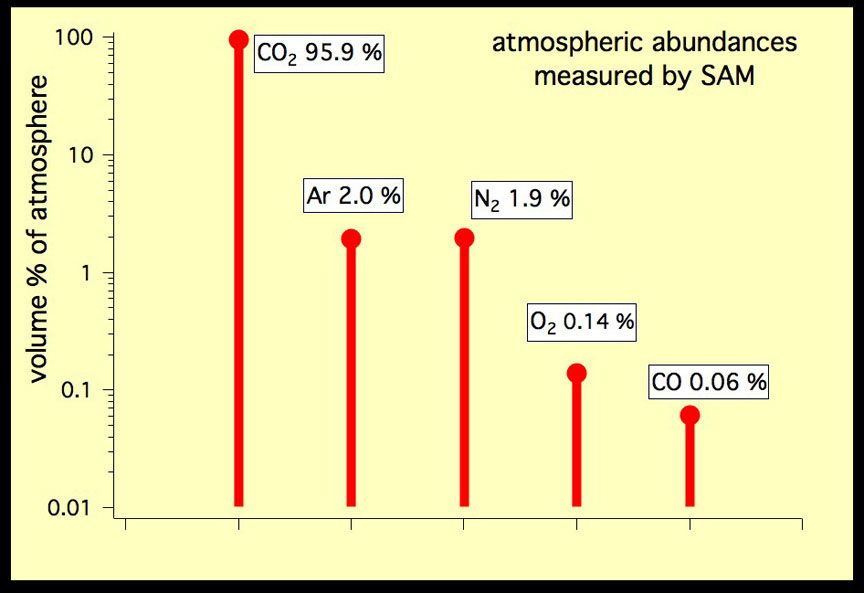
Researchers from the Harvard John A. Paulson School of Engineering and Applied Sciences (SEAS) suggest a different, less cut-and-dried scenario. Based on their studies, early Mars may have been warmed now and again by a powerful greenhouse effect. In a paper published in Geophysical Research Letters, researchers found that interactions between methane, carbon dioxide and hydrogen in the early Martian atmosphere may have created warm periods when the planet could support liquid water on its surface.
The team first considered the effects of CO2, an obvious choice since it comprises 95% of Mars’ present day atmosphere and famously traps heat. But when you take into account that the Sun shone 30% fainter 4 billion years ago compared to today, CO2 alone couldn’t cut it.
“You can do climate calculations where you add CO2 and build up to hundreds of times the present day atmospheric pressure on Mars, and you still never get to temperatures that are even close to the melting point,” said Robin Wordsworth, assistant professor of environmental science and engineering at SEAS, and first author of the paper.

Carbon dioxide isn’t the only gas capable of preventing heat from escaping into space. Methane or CH4 will do the job, too. Billions of years ago, when the planet was more geologically active, volcanoes could have tapped into deep sources of methane and released bursts of the gas into the Martian atmosphere. Similar to what happens on Saturn’s moon Titan, solar ultraviolet light would snap the molecule in two, liberating hydrogen gas in the process.
When Wordsworth and his team looked at what happens when methane, hydrogen and carbon dioxide collide and then interact with sunlight, they discovered that the combination strongly absorbed heat.
Carl Sagan, American astronomer and astronomy popularizer, first speculated that hydrogen warming could have been important on early Mars back in 1977, but this is the first time scientists have been able to calculate its greenhouse effect accurately. It is also the first time that methane has been shown to be an effective greenhouse gas on early Mars.

When you take methane into consideration, Mars may have had episodes of warmth based on geological activity associated with earthquakes and volcanoes. There have been at least three volcanic epochs during the planet’s history — 3.5 billion years ago (evidenced by lunar mare-like plains), 3 billion years ago (smaller shield volcanoes) and 1 to 2 billion years ago, when giant shield volcanoes such as Olympus Mons were active. So we have three potential methane bursts that could rejigger the atmosphere to allow for a mellower Mars.
The sheer size of Olympus Mons practically shouts massive eruptions over a long period of time. During the in-between times, hydrogen, a lightweight gas, would have continued to escape into space until replenished by the next geological upheaval.
“This research shows that the warming effects of both methane and hydrogen have been underestimated by a significant amount,” said Wordsworth. “We discovered that methane and hydrogen, and their interaction with carbon dioxide, were much better at warming early Mars than had previously been believed.”
 I’m tickled that Carl Sagan walked this road 40 years ago. He always held out hope for life on Mars. Several months before he died in 1996, he recorded this:
I’m tickled that Carl Sagan walked this road 40 years ago. He always held out hope for life on Mars. Several months before he died in 1996, he recorded this:
” … maybe we’re on Mars because of the magnificent science that can be done there — the gates of the wonder world are opening in our time. Maybe we’re on Mars because we have to be, because there’s a deep nomadic impulse built into us by the evolutionary process, we come after all, from hunter gatherers, and for 99.9% of our tenure on Earth we’ve been wanderers. And, the next place to wander to, is Mars. But whatever the reason you’re on Mars is, I’m glad you’re there. And I wish I was with you.”
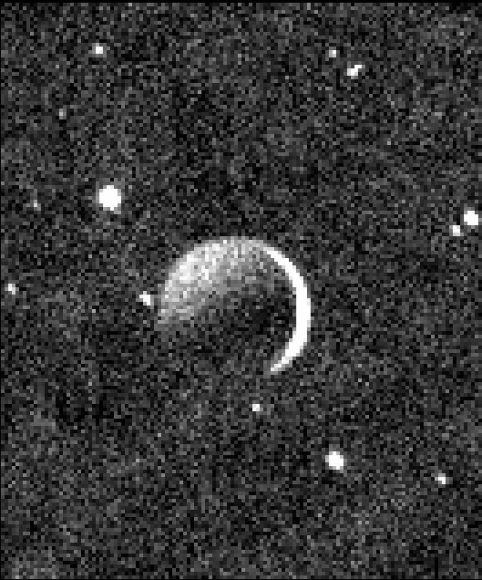
Sometimes, its not the eye candy aspect of the image, but what it represents. A recent image of Pluto’s large moon Charon courtesy of New Horizons depicting what could only be termed ‘Plutoshine’ caught our eye. Looking like something from the grainy era of the early Space Age, we see a crescent Charon, hanging against a starry background…
So what, you say? Sure, the historic July 14th , 2015 flyby of New Horizons past Pluto and friends delivered images with much more pop and aesthetic appeal. But look closely, and you’ll see something both alien and familiar, something that no human eye has ever witnessed, yet you can see next week.
We’re talking about the reflected ‘Plutoshine‘ on the dark limb of Charon. This over-exposed image was snapped from over 160,000 kilometers distant by New Horizons’ Ralph/Multispectral imager looking back at Charon, post flyby. For context, that’s just shy of half the distance between the Earth and the Moon. “Bigger than Texas” (Cue Armageddon), Charon is about 1200 kilometers in diameter and 1/8th the mass of Pluto. Together, both form the only true binary (dwarf) planetary pair in the solar system, with the 1/80th Earth-Moon pair coming in at a very distant second.
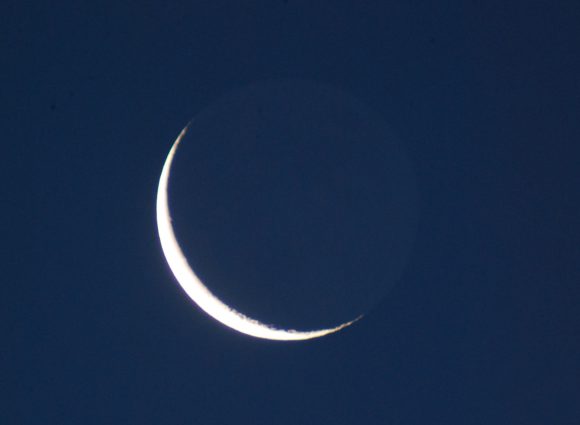
We see reflected sunlight coming off of a gibbous Pluto which is just out of frame, light that left the Sun 4 hours ago and took less than a second to make the final Pluto-Charon-New Horizons bounce. You can see a similar phenomenon next week, as Earthshine or Ashen Light illuminates the otherwise dark nighttime side of the Earth’s Moon, fresh off of passing New phase this weekend. Snow and cloud cover turned Moonward can have an effect on how bright Earthshine appears. One ongoing study based out of the Big Bear Solar observatory in California named Project Earthshine seeks to characterize long-term climate variations looking at this very phenomenon.
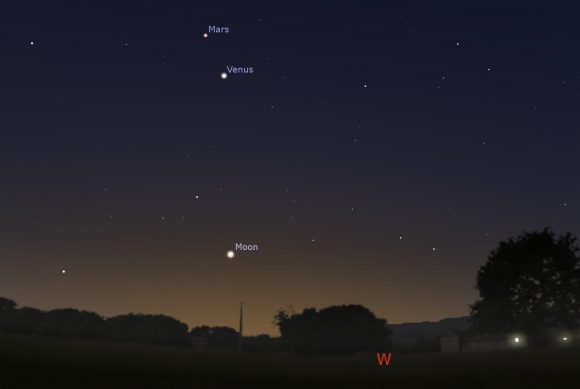
Standing on Pluto, you’d see a 3.5 degree wide Charon, 7 times larger than our own Full Moon. Of course, you’d need to be standing in the right hemisphere, as Pluto and Charon are tidally locked, and keep the same face turned towards each other. It would be a dim view, as the Sun shines at -20 magnitude at 30 AU distant, much brighter than a Full Moon, but still over 600 times fainter than sunny Earth. Dim Plutoshine on the nightside of Charon would, however, be easily visible to the naked eye.
A small 6 cm instrument, Ralph images in the visual to near-infrared range. Ralph compliments New Horizons larger LORRI instrument, which has a diameter and very similar optical configuration to an amateur 8-inch Schmidt-Cassegrain telescope.
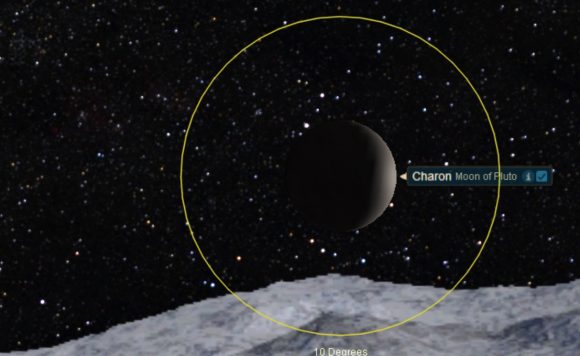
Don’t look for Pluto now; it just passed solar conjunction on the far side of the Sun on January 7th, 2017. Pluto reaches opposition and favorable viewing for 2017 on July 10th, one of the 101 Astronomical Events for 2017 that you’ll find in our free e-book, out from Universe Today.
And for an encore, New Horizons will visit the 45 kilometer in diameter Kuiper Belt Object 2014 MU69 on New Year’s Day 2019. From there, New Horizons will most likely chronicle the environs of the the distant solar system, as it joins Pioneer 10 and 11 and Voyagers 1 and 2 as human built artifacts cast adrift along the galactic plane.
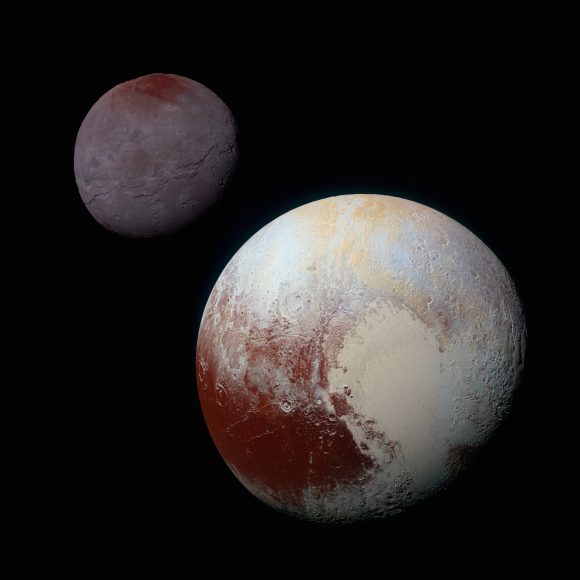
And to think, it has taken New Horizons about 18 months for all of its flyby data to trickle back to the Earth. Enjoy, as it’ll be a long time before we visit Pluto and friends again.

Three federal agencies — the National Park Service, the EPA and now NASA — have allegedly launched unofficial “protest” accounts on Twitter in defiance of the Trump team’s directives to not blog, tweet or talk to the news media about climate changes issues. While it’s not unusual for a new administration to want to control the message, many bristle at what they see as an administration that wants to redefine and control scientific fact.
That brings us to these accounts. Are they really created by NASA and other government employees or are they the work of ticked off science advocates not connected to the agencies? In at least one case earlier this week in Badlands National Park, a former employee posted this unauthorized tweet:
“Today, the amount of carbon dioxide in the atmosphere is higher than at any time in the last 650,000 years.” The tweet was later removed.
The @RogueNASA Twitter account uses NASA’s logo — a no-no unless you have specific permission. The site describes itself as “the unofficial “Resistance” team of NASA. Not an official NASA account. Follow for science and climate news and facts. REAL NEWS, REAL FACTS.”
NASA’s very strict about how it’s logo is used. Under Media Usage Guidelines, here’s what the agency has to say:
“The NASA insignia logo (the blue “meatball” insignia), the retired NASA logotype (the red “worm” logo) and the NASA seal may not be used for any purpose without explicit permission. These images may not be used by persons who are not NASA employees or on products, publications or web pages that are not NASA-sponsored. These images may not be used to imply endorsement or support of any external organization, program, effort, or persons.”

Moreover, NASA reported that it had not given permission for another group or person to use its logo on the new account. While the sites may be legit and you and I sympathetic to the cause, exercise skepticism when poking around these accounts. Be cautious of opening up or downloading files the same way you’re careful with e-mail attachments. Take a look, participate, but be wary.
For your perusal, the current “alt science” sites I’m aware of are listed below. My hunch after looking at them is that it’s possible they may have been created by the same group of people. Whatever their origin, they’re quickly becoming very popular. As of Wednesday evening (Jan. 25), Rogue NASA has 209,000 followers; AltEPA 41,600 and 883,000 at AltUSNatParkService.
* AltUSNatParkService
* AltEPA
* Rogue NASA
* AltNASA
For more on the new administration and NASA, check out Nancy Atkinson’s story “Could NASA Be Muzzled Under Trump Administration?”


Engineers have resumed a series of critical and rigorous vibration qualification tests on NASA’s mammoth James Webb Space Telescope (JWST) at NASA’s Goddard Space Flight Center, in Greenbelt, Maryland to confirm its safety, integrity and readiness for the unforgiving environment of space flight, after pausing due to a testing ‘anomaly’ detected in early December 2016.
The vibration tests are conducted by the team on a shaker table at Goddard to ensure Webb’s worthiness and that it will survive the rough and rumbling ride experienced during the thunderous rocket launch to the heavens slated for late 2018.
“Testing on the ground is critical to proving a spacecraft is safe to launch,” said Lee Feinberg, an engineer and James Webb Space Telescope Optical Telescope Element Manager at Goddard, in a statement.
“The Webb telescope is the most dynamically complicated article of space hardware that we’ve ever tested.”
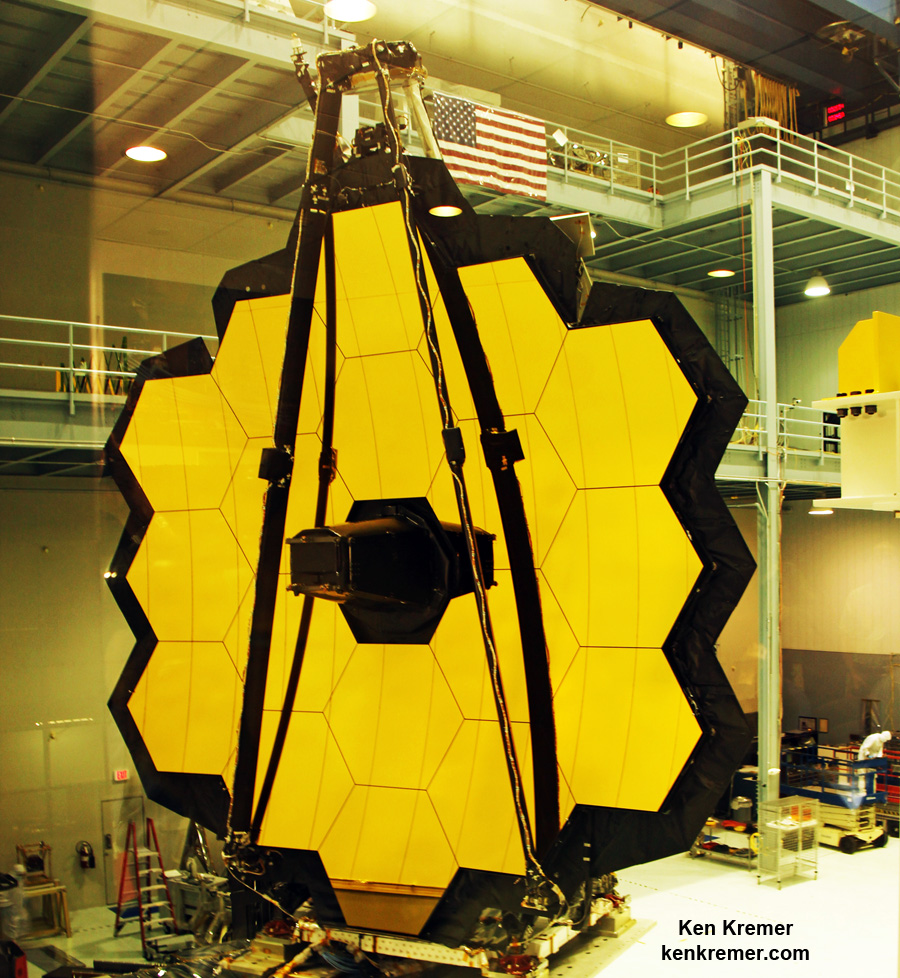
Testing of the gargantuan Webb Telescope had ground to a halt after a brief scare in early December when technicians initially detected “anomalous readings” that raised potential concerns about the observatories structural integrity partway through a preplanned series of vibration tests.
“On December 3, 2016, vibration testing automatically shut down early due to some sensor readings that exceeded predicted levels,” officials said.
Thereafter, engineers and technicians carried out a new batch of intensive inspections of the observatory’s structure during December.
Shortly before Christmas, NASA announced on Dec. 23 that JWST was deemed “sound” and apparently unscathed after engineers conducted both “visual and ultrasonic examinations” at NASA’s Goddard Space Flight Center in Maryland. Officials said the telescope was found to be safe at this point with “no visible signs of damage.”
As it turned out the culprit of the sensor anomaly was the many “tie-down … restraint mechanisms ” that hold the telescope in place.
“After a thorough investigation, the James Webb Space Telescope team at NASA Goddard determined that the cause was extremely small motions of the numerous tie-downs or “launch restraint mechanisms” that keep one of the telescope’s mirror wings folded-up for launch,” NASA officials explained in a statement.
Furthermore engineers revealingly discovered that “the ground vibration test itself is more severe than the launch vibration environment.”

NASA reported today (Jan. 25) that the testing resumed last week at the point where it had been paused. Furthermore the testing was completed along the first of three axis.
“In-depth analysis of the test sensor data and detailed computer simulations confirmed that the input vibration was strong enough and the resonance of the telescope high enough at specific vibration frequencies to generate these tiny motions. Now that we understand how it happened, we have implemented changes to the test profile to prevent it from happening again,” explained Feinberg.
“We have learned valuable lessons that will be applied to the final pre-launch tests of Webb at the observatory level once it is fully assembled in 2018. Fortunately, by learning these lessons early, we’ve been able to add diagnostic tests that let us show how the ground vibration test itself is more severe than the launch vibration environment in a way that can give us confidence that the launch itself will be fully successful.”
The next step is to resume and complete shaking the telescope in the other two axis, or “two directions to show that it can withstand vibrations in all three dimensions.”
“This was a great team effort between the NASA Goddard team, Northrop Grumman, Orbital ATK, Ball Aerospace, the European Space Agency, and Arianespace,” Feinberg said. “We can now proceed with the rest of the planned tests of the telescope and instruments.”
NASA’s James Webb Space Telescope is the most powerful space telescope ever built and is the scientific successor to the phenomenally successful Hubble Space Telescope (HST). The mammoth 6.5 meter diameter primary mirror has enough light gathering capability to scan back over 13.5 billion years and see the formation of the first stars and galaxies in the early universe.
The Webb telescope will launch on an ESA Ariane V booster from the Guiana Space Center in Kourou, French Guiana in 2018.
But Webb and its 18 segment “golden” primary mirror have to be carefully folded up to fit inside the nosecone of the Ariane V booster.
“Due to its immense size, Webb has to be folded-up for launch and then unfolded in space. Prior generations of telescopes relied on rigid, non-moving structures for their stability. Because our mirror is larger than the rocket fairing we needed structures folded for launch and moved once we’re out of Earth’s atmosphere. Webb is the first time we’re building for both stability and mobility.” Feinberg said.
“This means that JWST testing is very unique, complex, and challenging.”
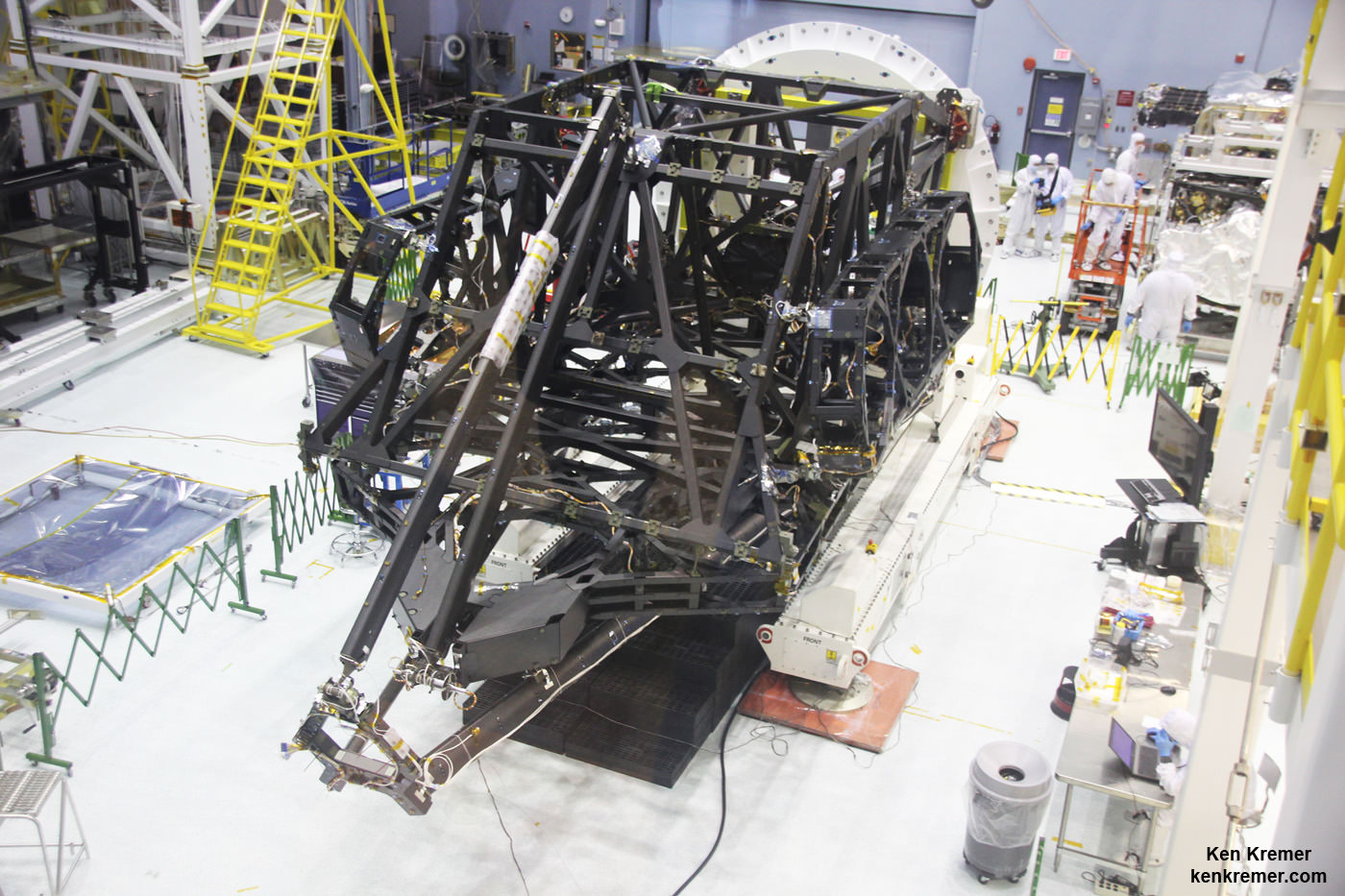
The environmental testing is being done at Goddard before shipping the huge structure to NASA’s Johnson Space Center in February 2017 for further ultra low temperature testing in the cryovac thermal vacuum chamber.
The 6.5 meter diameter ‘golden’ primary mirror is comprised of 18 hexagonal segments – looking honeycomb-like in appearance.
And it’s just mesmerizing to gaze at – as I had the opportunity to do on a few occasions at Goddard this past year – standing vertically in November and seated horizontally in May.
Each of the 18 hexagonal-shaped primary mirror segments measures just over 4.2 feet (1.3 meters) across and weighs approximately 88 pounds (40 kilograms). They are made of beryllium, gold coated and about the size of a coffee table.
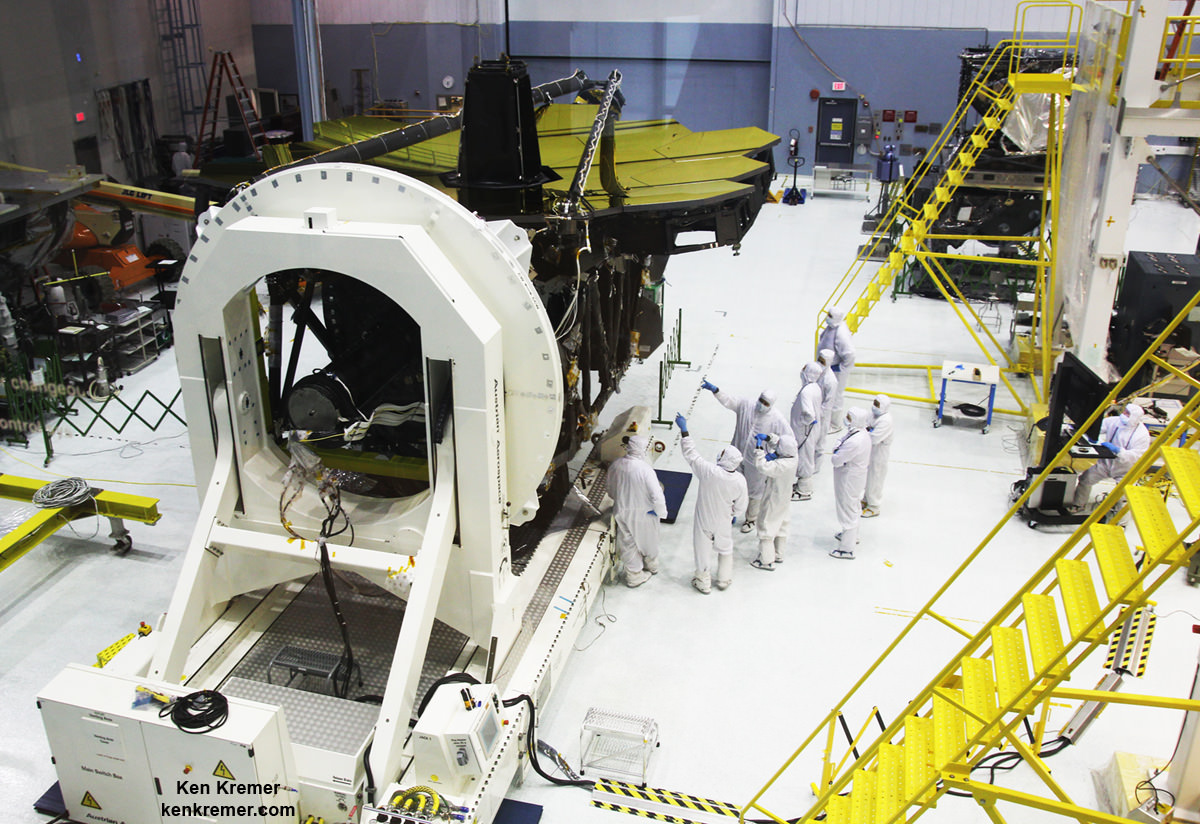
The Webb Telescope is a joint international collaborative project between NASA, the European Space Agency (ESA) and the Canadian Space Agency (CSA).
Webb is designed to look at the first light of the Universe and will be able to peer back in time to when the first stars and first galaxies were forming. It will also study the history of our universe and the formation of our solar system as well as other solar systems and exoplanets, some of which may be capable of supporting life on planets similar to Earth.
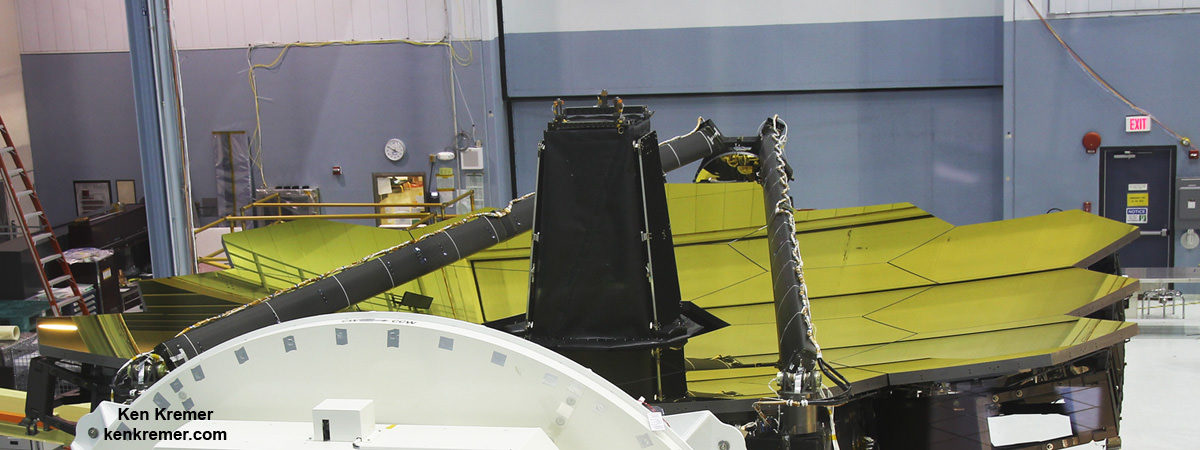
Watch this space for my ongoing reports on JWST mirrors, science, construction and testing.
Stay tuned here for Ken’s continuing Earth and Planetary science and human spaceflight news.
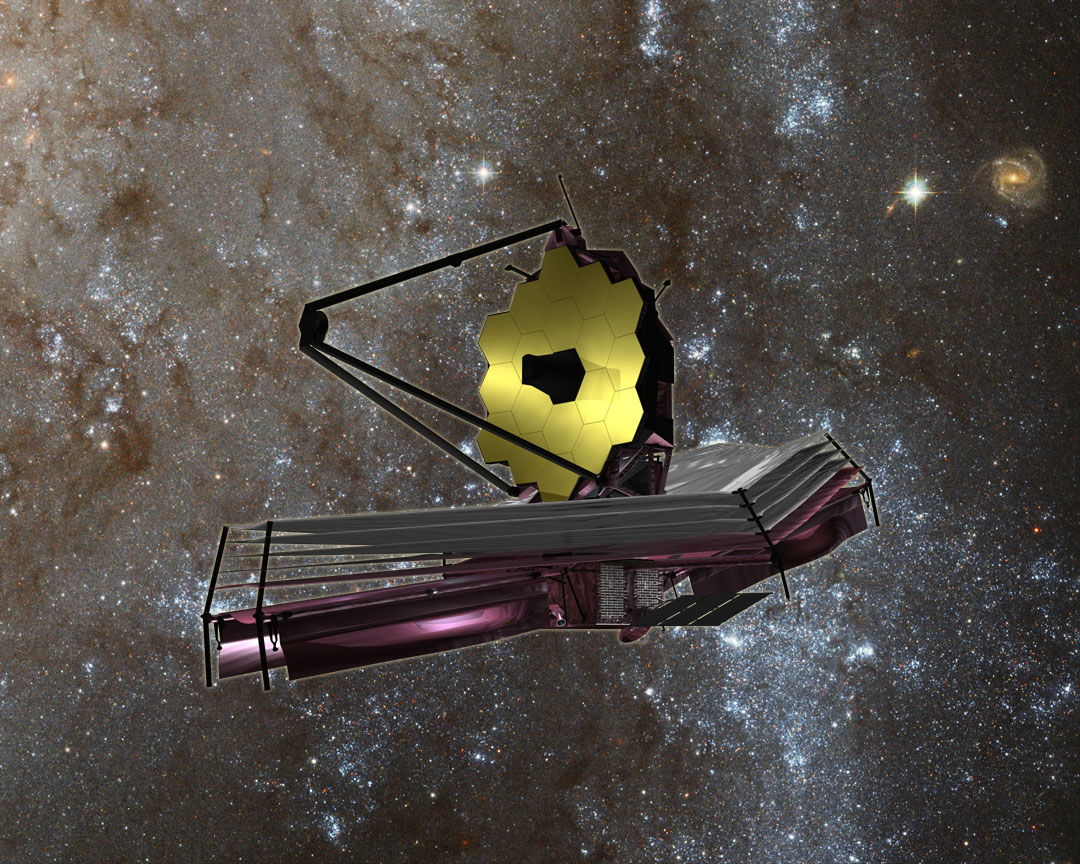
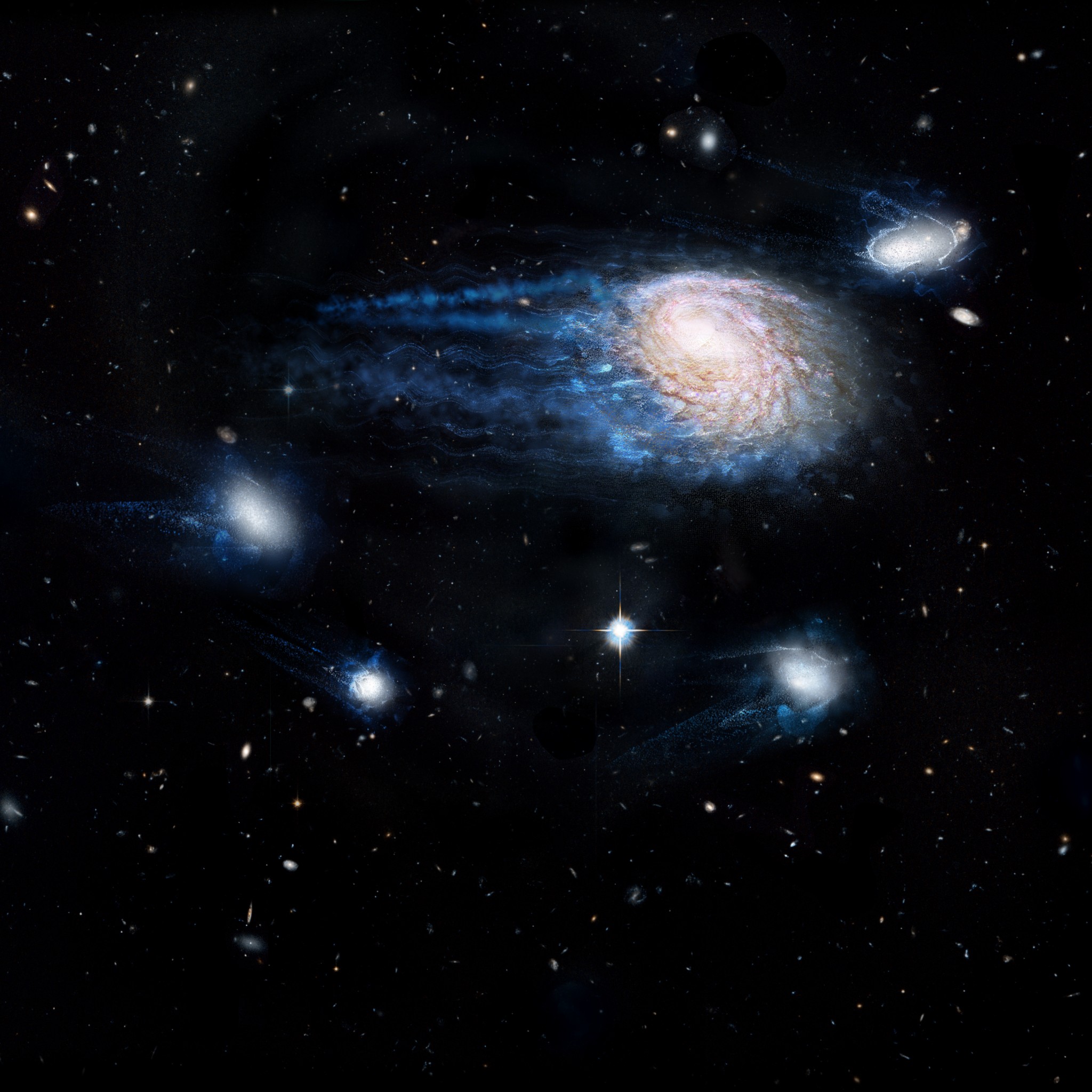
It’s what you might call a case of galactic homicide (or “galacticide”). All over the known Universe, satellite galaxies are slowly being stripped of their lifeblood – i.e. their gases. This process is responsible for halting the formation of new stars, and therefore condemning these galaxies to a relatively quick death (by cosmological standards). And for some time, astronomers have been searching for the potential culprit.
But according to a new study by a team of international researchers from the International Center for Radio Astronomy Research (ICRAR) in Australia, the answer may have to do with the hot gas galactic clusters routinely pass through. According to their study, which appeared recently in The Monthly Notices of the Royal Astronomical Society, this mechanism may be responsible for the slow death we are seeing out there.
This process is known as “ram-pressure stripping“, which occurs when the force created by the passage of galaxies through the hot plasma that lies between them is strong enough that it is able to overcome the gravitational pull of those galaxies. At this point, they lose gas, much in the same way that a planet’s atmosphere can be slowly stripped away by the effects of Solar wind.
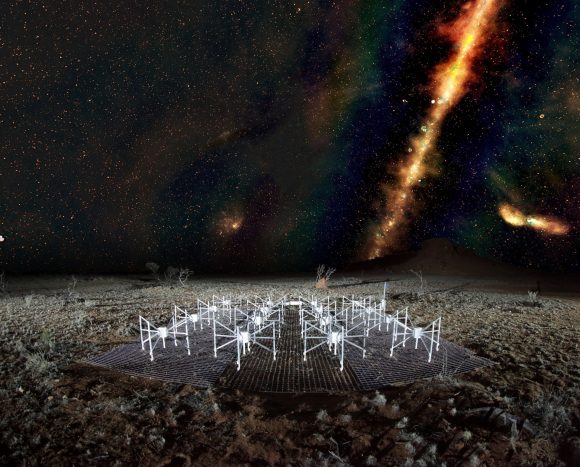
For the sake of their study, titled “Cold gas stripping in satellite galaxies: from pairs to clusters“, the team relied on data obtained by the Sloan Digital Sky Survey and the Arecibo Legacy Fast (ALFA) survey. While the SDSS provided multi-wavelength data on 10,600 satellite galaxies in the known Universe, ALFA provided data on the amount of neutral atomic hydrogen they contained.
By measuring the amount of stripping that took place within each, they deduced that the extent to which a galaxy was stripped of its essential gases had much to do with the mass of its dark matter halo. For some time, astronomers have believed that galaxies are embedded in clouds of this invisible mass, which is believed to make up 27% of the known Universe.
As Toby Brown – a researcher from the Center for Astrophysics and Supercomputing at the Swinburne University of Technology and the lead author on the paper – explained:
“During their lifetimes, galaxies can inhabit halos of different sizes, ranging from masses typical of our own Milky Way to halos thousands of times more massive. As galaxies fall through these larger halos, the superheated intergalactic plasma between them removes their gas in a fast-acting process called ram-pressure stripping. You can think of it like a giant cosmic broom that comes through and physically sweeps the gas from the galaxies.”
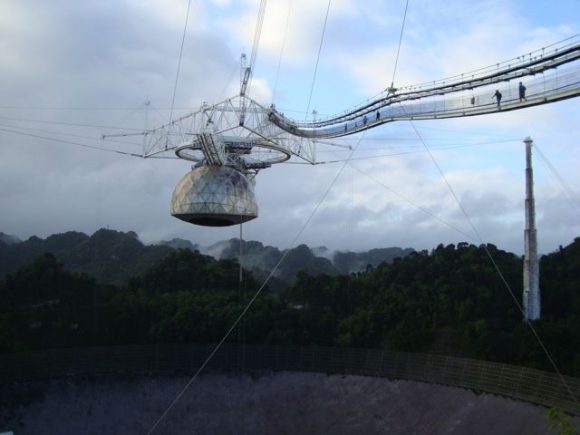
This stripping is what deprives satellites galaxies of their ability to form new stars, which ensures that the stars they have enter their red giant phase. This process, which results in a galaxy populated by cooler stars, makes them that much harder to see in visible light (though still detectable in the infrared band). Quietly, but quickly, these galaxies become cold, dark, and fade away.
Already, astronomers were aware of the effects of ram-pressure stripping of galaxies in clusters, which boast the largest dark matter halos found in the Universe. But thanks to their study, they are now aware that it can affect satellite galaxies as well. Ultimately, this shows that the process of ram-pressure stripping is more prevalent than previously thought.
As Dr. Barbara Catinella, an ICRAR researcher and co-author on the study, put it:
“Most galaxies in the Universe live in these groups of between two and a hundred galaxies. We’ve found this removal of gas by stripping is potentially the dominant way galaxies are quenched by their surroundings, meaning their gas is removed and star formation shuts down.”
Another major way in which galaxies die is known as “strangulation”, which occurs when a galaxy’s gas is consumed faster than it can be replenished. However, compared to ram-pressure stripping, this process is very gradual, taking billions of years rather than just tens of millions – very fast on a cosmological time scale. Also, this process is more akin to a galaxy suffering from famine after outstripping its food source, rather than homicide.
Another cosmological mystery solved, and one that has crime-drama implications no less!
Further Reading: Royal Astronomical Society, MNRAS
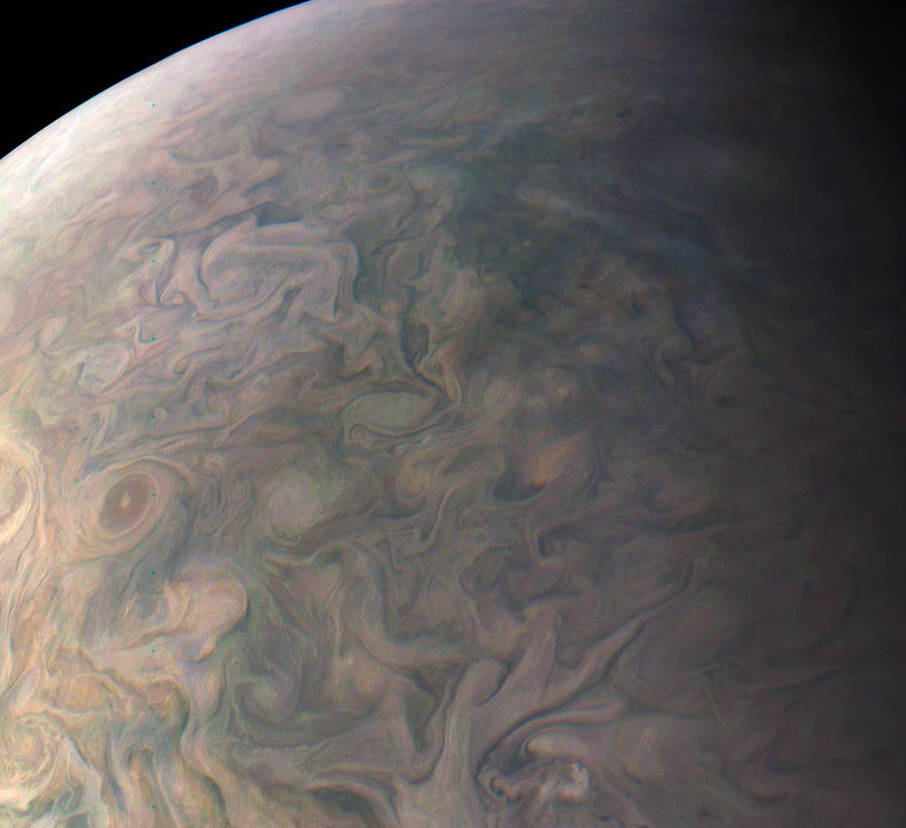
Wow! If you’ve ever wanted to know what it would be like to hang above Jupiter’s clouds, here you go. This absolutely stunning view of Jupiter’s northern latitudes shows incredible detail of gas giant’s swirling cloudtops. And it features, in the lower left in the image below, the storm on the gas planet known as NN-LRS-1, or more colloquially, the Little Red Spot.

Juno’s JunoCam, a visible light camera, is able to get never-before-seen images like this because it is doing something that no other mission to Jupiter has done.
“The spacecraft’s proximity to Jupiter is very unusual,” Rick Nybakken told me during an interview at JPL last year. Nybakken is Juno’s project manager. “Juno has an elliptical orbit that brings it just 3,107 miles (5,000 km) above the cloud tops. No other mission has been this close, and we’re right on top of Jupiter so to speak.”
Special instruments are studying Jupiter’s radiation belt and magnetosphere, its interior structure, and the turbulent atmosphere, as well as providing views of the planet with spectacular, close-up images.
And another great thing about this image is that it was processed by citizen scientists. Gerald Eichstaedt and John Rogers processed the image and drafted the caption, and this will be the norm for many of the JunoCam images, because it’s “the public’s camera.”
“I’m excited though for what we’re doing with the visible light camera,” said Juno Project Scientist Steve Levin, who I also interviewed at JPL. “We’re making JunoCam as much as much as we possibly can an instrument that belongs to the public. We’ll solicit the aid of the public in picking which images to take, and releasing the data in its rawest form, and allow people to go and make the images.”
Scientist Candy Hansen is leading this citizen science effort, and she uses the phrase, “science in a fishbowl,” meaning the JunoCam team is showing people what it is like to do science by allowing anyone to participate and see the data as it arrives from Juno.
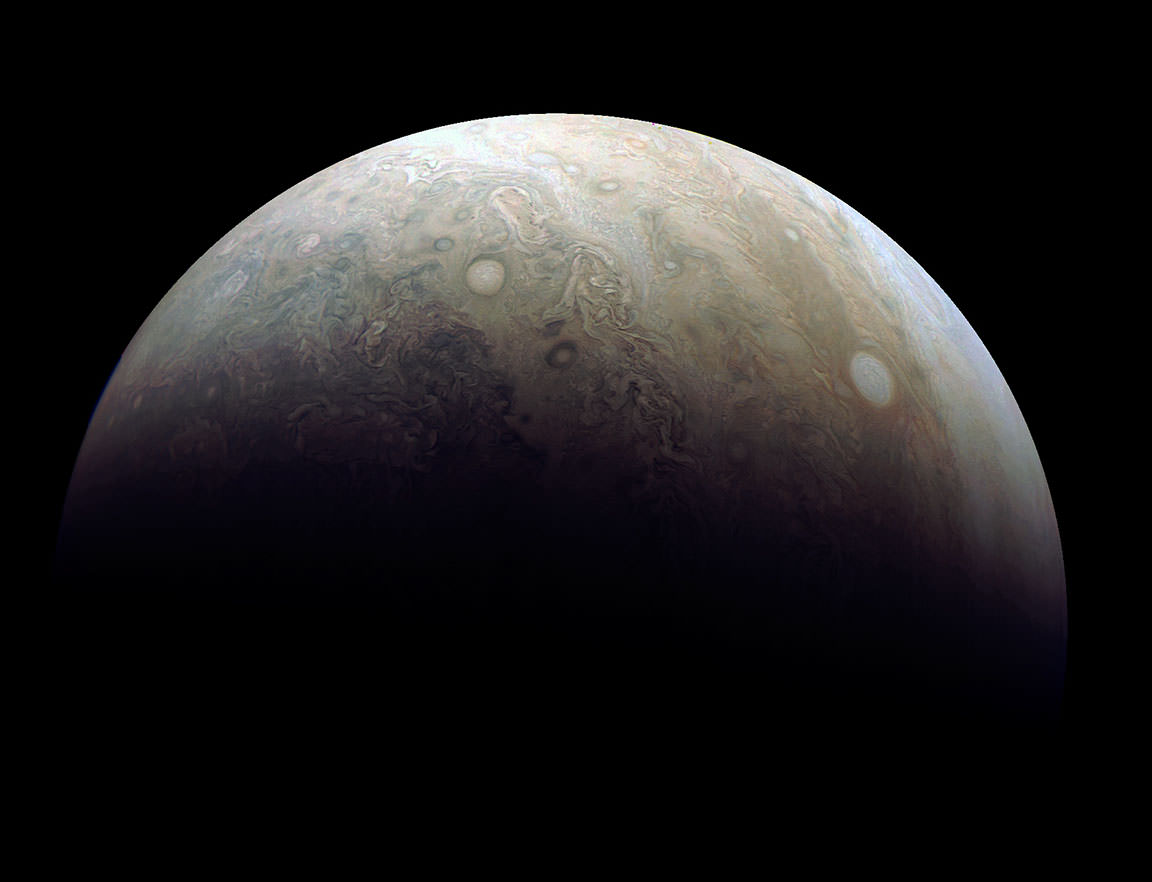
You can find the raw images here, so go ahead and test out your image processing skills.
JunoCam is designed to capture remarkable pictures of Jupiter’s poles and cloud tops. Although its images will be helpful to the science team to help provide context for the spacecraft’s other instruments, it is not considered one of the mission’s science instruments. JunoCam was included on the spacecraft specifically for purposes of engaging and including the public.
The Little Red Spot is the third largest anticyclonic oval on the planet, which Earth-based observers have tracked for the last 23 years. An anticyclone is a weather phenomenon with large-scale circulation of winds around a central region of high atmospheric pressure. They rotate clockwise in the northern hemisphere, and counterclockwise in the southern hemisphere. The Little Red Spot shows very little color these days, just a pale brown smudge in the center. Back in 2006, the storm was stronger and the color changed darker and more red. Now, with the storm not quite as active, the color is very similar to the surroundings, making it difficult to see.
If you’d like to download a larger version of this processed image (need a new wallpaper?) you can find it on NASA’s website.

The Japanese Aerospace Exploration Agency (JAXA) has accomplished some impressive things over the years. Between 2003 (when it was formed) and 2016, the agency has launched multiple satellites – ranging from x-ray and infrared astronomy to lunar and Venus atmosphere exploration probes – and overseen Japan’s participation in the International Space Station.
But in what is an historic mission – and a potentially controversial one – JAXA recently launched the first of three X-band defense communication satellites into orbit. By giving the Japanese Self-Defense Forces the ability to relay communications and commands to its armed forces, this satellite (known as DSN 2) represents an expansion of Japan’s military capability.
The launch took place on January 24th at 4:44 pm Japan Standard Time (JST) – or 0744 Greenwich Mean Time (GMT) – with the launch of a H-IIA rocket from Tanegashima Space Center. This was the thirty-second successful flight of the launch vehicle, and the mission was completed with the deployment of the satellite in Low-Earth Orbit – 35,000 km; 22,000 mi above the surface of the Earth.
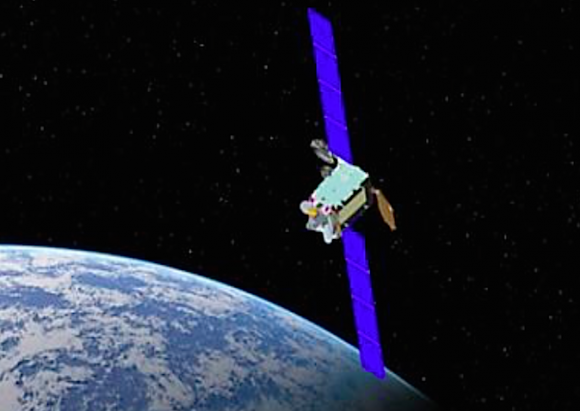
Shortly after the completion of the mission, JAXA issued a press release stating the following:
“At 4:44 p.m., (Japan Standard Time, JST) January 24, Mitsubishi Heavy Industries, Ltd. and JAXA launched the H-IIA Launch Vehicle No. 32 with X-band defense communication satellite-2* on board. The launch and the separation of the satellite proceeded according to schedule. Mitsubishi Heavy Industries, Ltd. and JAXA express appreciation for the support in behalf of the successful launch. At the time of the launch the weather was fine, at 9 degrees Celsius, and the wind speed was 7.1 meters/second from the NW.”
This launch is part of a $1.1 billion program by the Japanese Defense Ministry to develop X-band satellite communications for the Japan Self-Defense Forces (JSDF). With the overall goal of deploying three x-band relay satellites into geostationary orbit, its intended purpose is to reduce the reliance of Japan’s military (and those of its allies) on commercial and international communications providers.
While this may seem like a sound strategy, it is a potential source of controversy in that it may skirt the edge of what is constitutionally permitted in Japan. In short, deploying military satellites is something that may be in violation of Japan’s post-war agreements, which the nation committed to as part of its surrender to the Allies. This includes forbidding the use of military force as a means of solving international disputes.
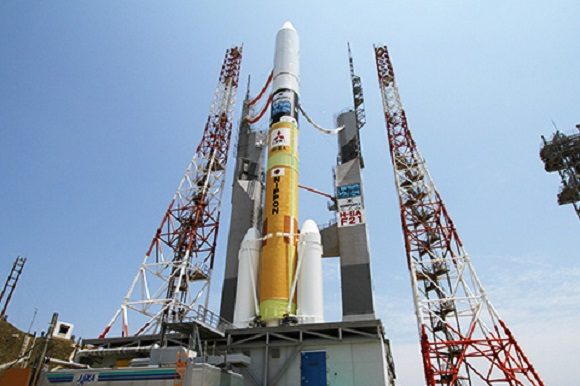
It also included placing limitations on its Self-Defense Forces so they would not be capable of independent military action. As is stated in Article 9 of the Constitution of Japan (passed in 1947):
“(1) Aspiring sincerely to an international peace based on justice and order, the Japanese people forever renounce war as a sovereign right of the nation and the threat or use of force as means of settling international disputes.
(2) In order to accomplish the aim of the preceding paragraph, land, sea, and air forces, as well as other war potential, will never be maintained. The right of belligerency of the state will not be recognized.”
However, since 2014, the Japanese government has sought to reinterpret Article 9 of the constitution, claiming that it allows the JSDF the freedom to defend other allies in case of war. This move has largely been in response to mounting tensions with North Korea over its development of nuclear weapons, as well as disputes with China over issues of sovereignty in the South China Sea.
This interpretation has been the official line of the Japanese Diet since 2015, as part of a series of measures that would allow the JSDF to provide material support to allies engaged in combat internationally. This justification, which claims that Japan and its allies would be endangered otherwise, has been endorsed by the United States. However, to some observers, it may very well be interpreted as an attempt by Japan to re-militarize.
In the coming weeks, the DSN 2 spacecraft will use its on-board engine to position itself in geostationary orbit, roughly 35,800 km (22,300 mi) above the equator. Once there, it will commence a final round of in-orbit testing before commencing its 15-year term of service.
Further Reading: Spaceflight Now
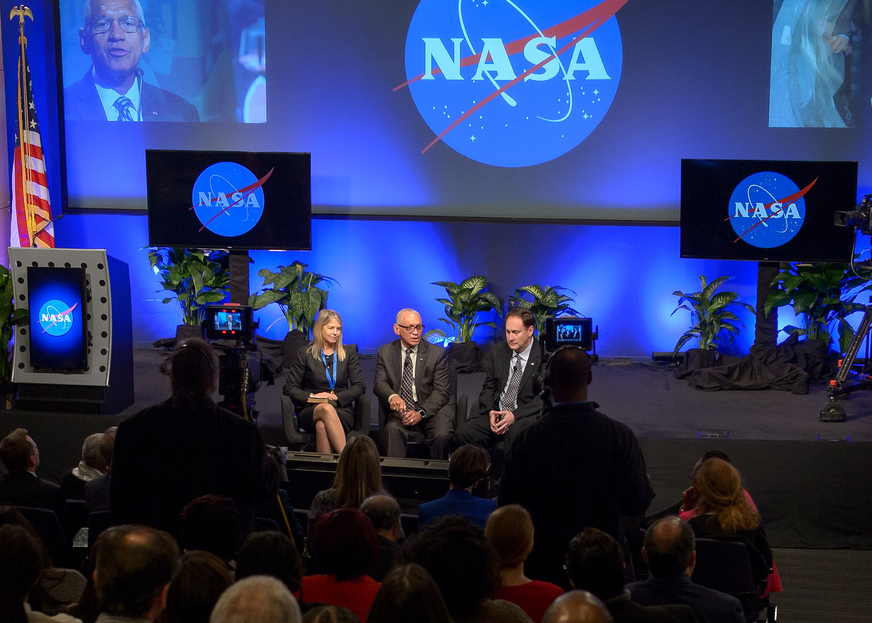
The Trump Administration appears to be trying to change how government agencies disseminate information to the public. According to reports from multiple outlets, several agencies are being told to discontinue or suppress communications with the public, the media and even Congress.
Additionally, Reuters is reporting that the Trump administration has instructed the Environmental Protection Agency (EPA) to remove information about climate change from its website. (An update today from The Hill quotes Doug Ericksen, EPA transition team spokesman as they are only “taking a look at everything on there.”)
All this has anyone interested in NASA’s activities wondering if the US space agency could be ordered to stifle its very active social media presence, or to remove the extensive information it has available on several NASA-related sites on climate change.
Universe Today contacted several NASA sources to see if the space agency has received any orders similar to the other agencies. All indications appear that, for now, NASA has not received any such orders.
John Yembrick, who heads NASA Headquarters’ social media team told us via email that “Nothing has changed here at NASA. We are continuing to share information about our missions on social media.”
Another NASA employee who wished to remain anonymous said they would be surprised and horrified if the social media blocks would extend to NASA but it seems nothing is out of the question now.
This morning, several NASA social media accounts on Twitter and Facebook are posting as usual.
Jeff Foust from Space News reported on Twitter last night that he attended a talk by Michael Freilich, the director of NASA’s Earth science division at the meeting of the American Meteorological Society (AMS) going on this week in Seattle, Washington, and Freilich was asked if NASA been given direction like EPA and other agencies to not communicate with public. Foust tweeted that Freilich said they “have been given no direction to change” and that the transition to the new administration’s “landing team” of about eight people at NASA has gone smoothly.

It is important to remember that federal law has required NASA to widely disseminate information about its activities and scientific research in a timely way. National Aeronautics and Space Act of 1958 chartered NASA to “provide for the widest practicable and appropriate dissemination of information concerning its activities and the results thereof.”
The anonymous NASA source Universe Today talked to said the bigger issue for them right now is the hiring freeze that was imposed on all government agencies, and a possible grant freeze, such as the freezes posed on the EPA. Many scientists and graduate student work programs rely on grants for their salaries.
Other agencies that have been reportedly muzzled are the Interior Department (and the National Park Service), the Department of Agriculture (USDA), Department of Commerce, and Health and Human Services. All this is sparking concerns that the new president might be attempting to silence any dissenting views and control any information from federal agencies.
A news article out this morning says the USDA has now “disavowed the gag order”, calling it “flawed” and indicating that new guidance would be sent to its employees.
“This internal email was released without Departmental direction, and prior to Departmental guidance being issued,” the USDA said in a statement.
It’s important to point out that previous incoming presidential administrations have placed somewhat similar restrictions on limiting communications during the transition in order to have consistent messages come out across agencies.
But of course, there hasn’t been a new administration for eight years, and during those years the amount of information government agencies have made available on the internet has increased exponentially, and participation on social media has exploded. So, the moves to limit or silence the information disseminated by the agencies via online outlets is therefore unprecedented.
And many say this presidential transition feels completely different from any before.
National Public Radio (NPR) correspondent Nathan Rott interviewed Andrew Light, Senior Fellow in the Climate Program at the World Resources Institute in Washington, D.C., who formerly worked at the State Department. Light said the muzzling of agencies “seems to be aimed at a cluster of science-driven agencies that primarily work on the environment or climate change, and that seems unique or targeted in this case and unprecedented.”
You can listen to the NPR interview below:
The two highest people in leadership at NASA under the Obama Administration, Administrator Charles Bolden and Deputy Administrator Dava Newman, both stepped down on January 20 at the end of Obama’s term. NASA Associate Administrator Robert Lightfoot was named as acting administrator of NASA. Two White House appointees were named, Erik Noble as White House senior advisor and Greg Autry as White House liaison, part of an eight-member “landing team” assigned to NASA by Trump’s transition team.
Autry is an assistant professor of entrepreneurship at the University of Southern California. He has been “a proponent of commercial space activities,” according to Space News. Noble, who earned a Ph.D. in environmental studies from the University of Colorado, spent seven years at the NASA Goddard Institute of Space Studies in New York, working on weather and climate models.
Concern about agencies being silenced were heightened yesterday when a National Park Service (NPS) Twitter account from the Badlands National Park in South Dakota began posting information about climate change, which were later deleted. The NPS told media outlets that a former employee without approved access wrote the Tweets and that’s why they were deleted.

This came just days after the NPS was told to shut down its Twitter activity over two retweets about crowd sizes at presidential inaugurations. The Department of the Interior said those tweets were deemed inconsistent with the agency’s mission.
About 60 science and journalism organizations have requested a meeting with President Trump and Vice President Mike Pence to discuss access to government, but the newly elected team has not replied to the request.
The Sunlight Foundation, “a nonpartisan, nonprofit organization that uses technology, open data, policy analysis and journalism to make our government and politics more accountable and transparent to all,” has posted a list of government agencies that have reportedly been directed to not communicate with the public.